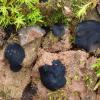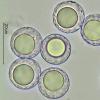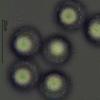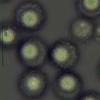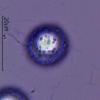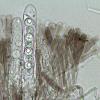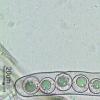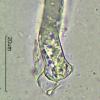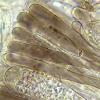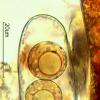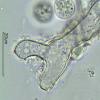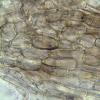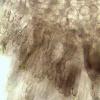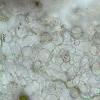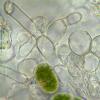
30-12-2025 16:44
Pascal DucosBonjour,Une anamorphe rose stipitée, très nombre

30-12-2025 17:14
 Bernard CLESSE
Bernard CLESSE
Bonjour à toutes et tous,Pourriez-vous aider Albe

29-12-2025 10:15
Hulda Caroline HolteHello, I found and collected this propoloid ascom

30-12-2025 09:04
Hello.A Pyrenomycete sprouting sparsely but very d

29-12-2025 17:44
Isabelle CharissouBonjour,J'aimerais savoir si d'autres personnes au

12-11-2021 00:03
Lepista ZacariasHi everybody,A week ago in my fiels trip I noticed

29-12-2025 17:12
 Bernard CLESSE
Bernard CLESSE
Bonjour à toutes et tous,Pourriez-vous m'aider à

Hola a todos.
Subo unas imágenes de un disco negruzco que hemos encontrado hoy sobre tierra húmeda, en un bosquete de P. halepensis y carrascas,
Tiene esporas esféricas de 14,5-17,5 micras, con verrugas redondeadas muy pequeñas y aisladas.
No vistos croziers, IKI(-).
¿Qué os parece que puede ser?
Gracias por su ayuda.
Rubén
may be Scabropeziza/ Plicaria spec.
Peter.

I don't know but only for information, see description of Greletia (Smardaea) mülleri, an american species.
Beñat

Gracias Peter, Beñat.
He mirado Greletia mülleri y la ornamentación esporal es parecida y podría encajar, pero la medida esporal es algo menor.
Seguiré buscando.
Un saludo
Rubén
Hope you find the correct name for it.
Sincerely,
zaca
Plácido

M. pseudoanthrancina is a Peziza, see fungi non delineati by René.
And spores of it are around 7-8 µm, not 14-17 like here. A big difference, no ?
Agur bero bat,
Beñat

For a project dedicated to some Marcelleina species, we had the opportunity to sequence Rubén's collection. A paratype of Marcelleina donadinii was also revised and sequenced, and appears to be the same as Rubén's fungus!
Except the spore size, slightly smaller, Ø (12.5) 13-15 µm, in the paratype, the other features agree with Moravec's description (1987). Note that Moravec's drawing of ascospores doesn't correctly render the small warts on the surface (its SEM photos are more informative).
Finally, this species seems to be a member of Discinaceae...

Gracias por la información.
Un abrazo
Rubén



